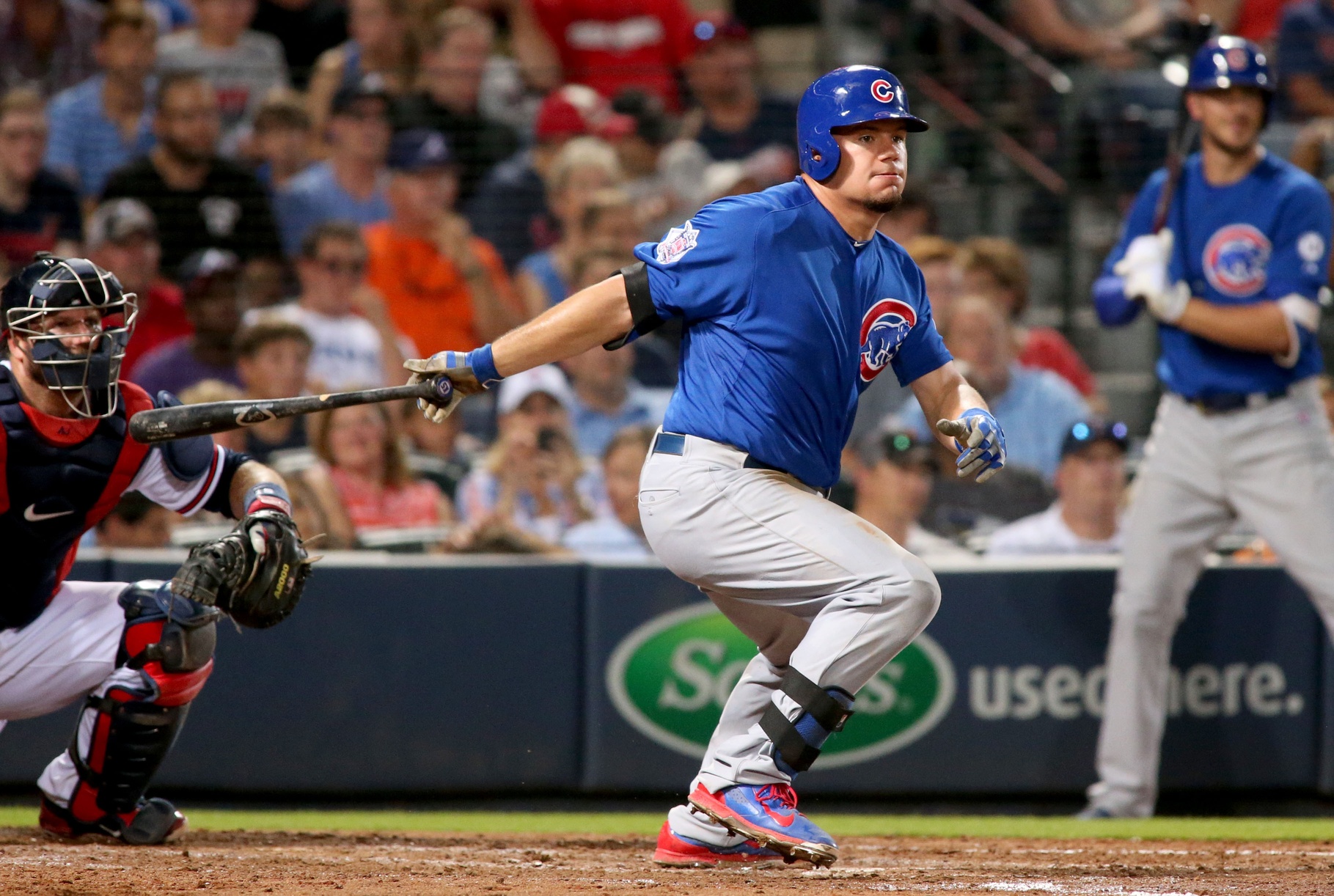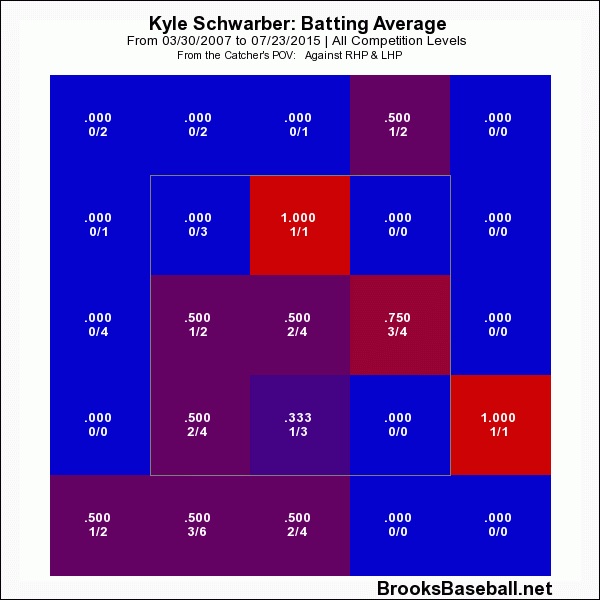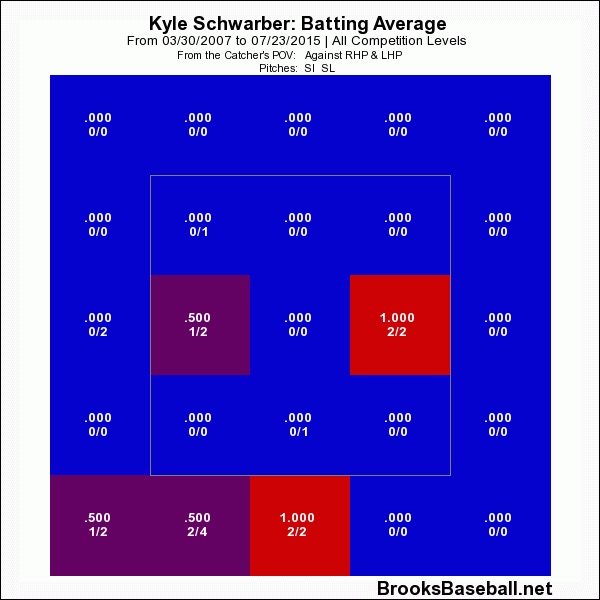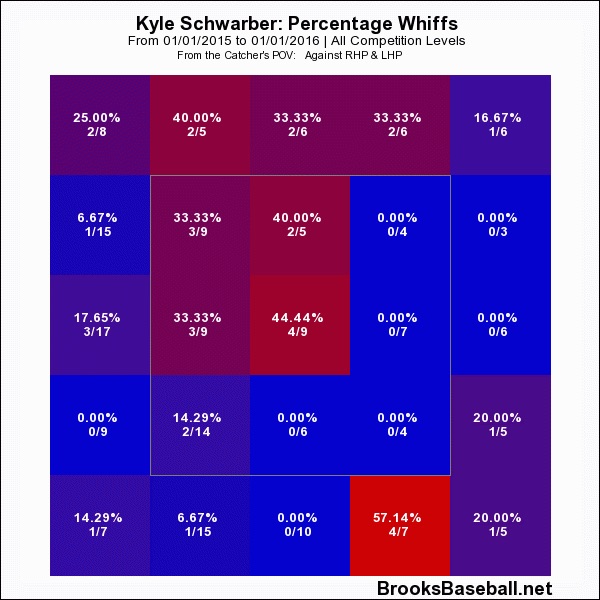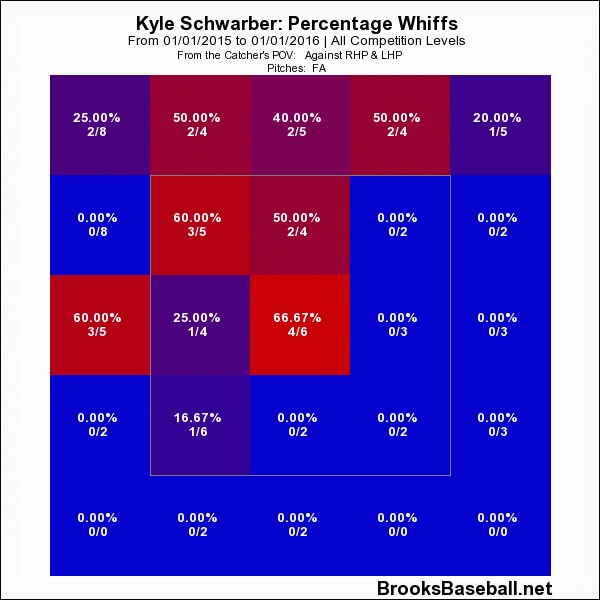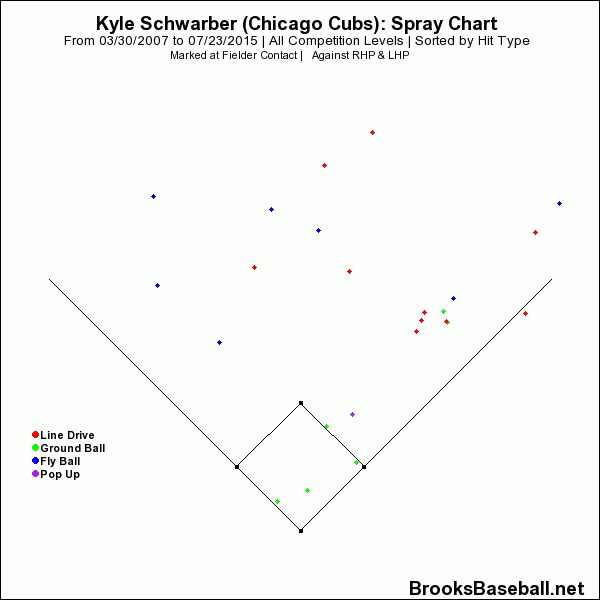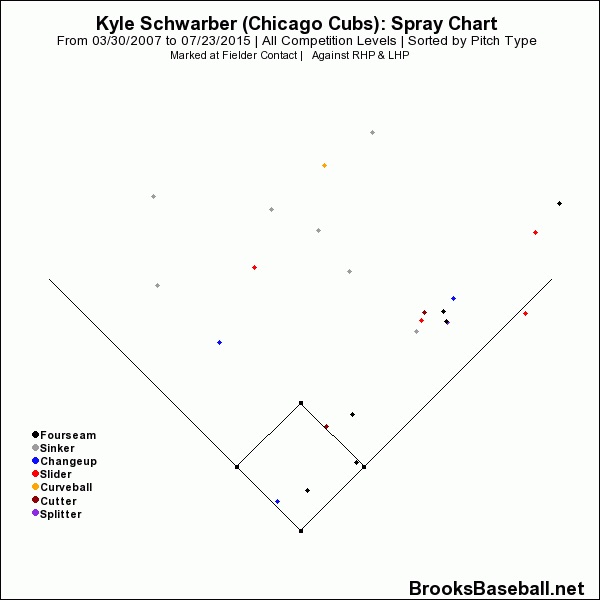Moving forward into the second half of an already immensely exciting 2015, we are all faced with the reality that in the last couple of weeks, the offense has been absent for the Chicago Cubs. We aren’t exactly sure why, we just know that it’s happening.
Though the Cubs have lost Miguel Montero to a fluke thumb injury for a good portion of the remainder of the season, the plus side in that is that we get to see the likes of Kyle Schwarber in the bigs again just a tad sooner than we had expected. This isn’t a bad thing, it’s not as if the Montero injury has stunted some much needed development time in Iowa for Schwarber as his bat is more than ripe and has been bearing the fruits of his labor from the get-go.
As our own Mauricio Rubio highlights, it still remains to be seen as to whether or not Schwarber will be able to stick behind the plate once he’s no longer needed as a fill-in for Montero. While the hit tool we see on display may make us forget, Schwarber is still only 22 years old and just coming out of Double-A ball with just a brief taste of Triple-A this season. The mental maturity may not have fully developed enough for him to bare the pressure of full-time big-league catching yet, as well an underdeveloped framing skill set and somewhat large frame that looks to be a hinderance behind the plate both presently and in the future.
But looking only at the now, I think Cubs fans can unanimously agree that while this offense has been dull at best, Schwarber is the splash of color that it needed, and he couldn’t have come at a more perfect time.
Schwarber was called up less than two weeks ago and has already amassed an impressive (albeit small sample size) .352/.426/.593 line with two doubles and three home runs in a total of 61 plate appearances. Of course, unless we’re expecting Schwarber to eclipse Kris Bryant’s abilities moving forward (I don’t think many of us are), we know these numbers are not completely sustainable. However, there is quite a bit of promise in them.
Schwarber has been highlighted for his exceptional offensive abilities since he was first put on the prospect map, and has been praised for his patient plate approach (for which he attributes partially to his admiration of Reds slugger Joey Votto). Schwarber is currently seeing just shy of four pitches per plate appearance (3.90) but has the ability to pick his pitches with calculated precision (his 26.3 percent strikeout rate is a bit high, but balanced by a solid 10.5 percent walk rate). Surely, those numbers will equalize and with his patient approach and pitchers getting a feel for what feeds Schwarber’s hunger at the plate, he will steadily begin to decrease his strikeout rate and increase his walk rate while still putting up productive plate appearances. Schwarber’s approach sets him apart from the likes of top Rangers prospect Joey Gallo, who put up an impressive stretch in his first couple of games, but then met his match in big-league pitching, leading him to a strikeout rate of nearly 50 percent before his demotion back to Triple-A Round Rock.
Schwarber is currently showing an abundance of power to his pull side, and has barely scratched the surface of his opposite field potential which should come in due time. Schwarber tends to do significant damage against pitches down in the zone:
Naturally, with Schwarber feasting on pitches down low, he’s doing work against sinkers and sliders down.
For the most part, Schwarber’s weakness is at the opposite spectrum, up high. It was something we saw exposed at the end of his first stint in the bigs and perhaps it’s something to watch going forward as it appears he whiffs quite frequently on these offerings (first heat map below), particularly on fastballs (second heat map below):
That’s pretty concentrated, as you can see. If this trend continues, this will be the way pitchers will learn to exploit Schwarber’s weaknesses, while they figure out how to pitch around the sinker and slider usage that Schwarber is absolutely eating up right now.
Most of his line-drive and power success come off the hard stuff—four-seamers, sinkers, and cutters (the slider is worth some honorable mention here as well, one of his three home runs came off a slider). Check out his spray charts below, first by hit type and second pitch type.
It’s quite impressive how Schwarber has been able to make the most of his hits in his short time with the Cubs thus far as well. In the 17 games he’s played, he totaled 11 RBIs, and hopefully with Dexter Fowler’s on-base presence heating up just in the nick of time—since Schwarber’s arrival, Fowler has an OBP of .479 and walked 13 times in 10 games—Schwarber’s RBI opportunities will grow even more.
The major-league adjustment period is very real, and it isn’t just for the hitter himself, but also for pitchers in the league who are facing a new hitter like Schwarber. Once they begin to realize that Schwarber attacks pitches down in the zone and hits hard and breaking pitches for power, they’ll begin to tailor the way they approach him, which will potentially lead to a slight decline in production like we’ve seen recently from Addison Russell and Kris Bryant. This is truly no cause for concern, it’s just a growing pain that all hitters must go through. But with the patience that Schwarber has demonstrated at the plate, if he can begin to lay off high fastballs and continue to pick and choose the pitches he takes, he will keep the damage of the adjustment phase to a minimum.
Of course there is concern, as I mentioned before, as to whether or not Schwarber sticks behind the plate, and what will happen to him once Montero returns to the 25-man roster. Obviously, Taylor Teagarden’s days on the North Side are numbered, and come Montero’s return, should Teagarden still be on the roster (though this is doubtful, with the trade deadline passing soon), he will be the first to go—but the Cubs will still be carrying three catchers. There is potential for Schwarber to make himself at home in left field, which is now manned by the unexpectedly impressive Chris Coghlan, but should there be a need to keep Schwarber’s bat in the lineup, it’s possible we could see him get some playing time in the corner outfield spot. The current roster situation for the Cubs is a little lopsided, with three catchers and an eight-man bullpen while they’re fostering a frail bench, but the need for Schwarber’s presence at the moment is undeniable. I suspect once Montero returns and we’ve seen where the chips have fallen after the trade deadline, we’ll also have had more time to see how Schwarber fares behind the plate and the Cubs will have to make some decisions. For now, they’ll just have to wait, and cross that bridge when they come to it.
Lead photo courtesy of Jason Getz-USA TODAY Sports
